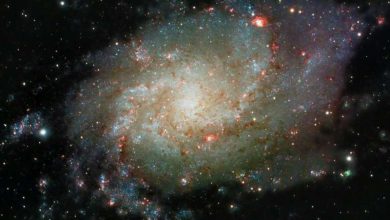Analysis: Is Mali emerging as another front for Russia, West?

Experts believe Russia continues to increase its military profile in West African nation of Mali to chagrin of West
As the Russia-Ukraine war continues to haunt the world, thousands of miles away in the West African country of Mali is emerging another front for escalation between Moscow and the West.
Speaking to Anadolu Agency, Ismael Buchanan, a senior lecturer at the department of political science at the University of Rwanda, said Moscow’s geopolitical quest in West Africa and Mali’s support to Russia in the Ukraine conflict depict Moscow’s success in the region with a potential to open new fault lines with France and other NATO allies in the region.
Mali was among 35 countries that abstained at the UN General Assembly, when it voted on a resolution, condemning Russia’s invasion of Ukraine.
“Paris and other European allies have been increasingly jittery over what they see as a Russian threat in West Africa,” said Buchanan.
In March, Russia delivered Mi-35M attack helicopters and an advanced air radar system to Mali. The delivery was in addition to at least four helicopters and weapons provided by Russia under closer ties with the junta leader.
Of even greater concern to the West is that Moscow sent to Mali “military instructors” personnel that France says are operatives from Russia’s Wagner security arm.
Recently French President Emmanuel Macron expressed concerns at the actions of the Russian private security service Wagner in Mali, and in particular about its alleged crimes against certain communities such as the Fulani.
While hosting Senegalese President Macky Sall who currently chairs the African Union (AU), in Paris, the French president urged to maintain “pressure” on the Malian government.
Buchanan said the more Moscow advances its interests in West Africa, the more it will come in conflict with the West and provoke a response.
“Mali would present another stage for a geopolitical showdown because there is no doubt that Russia will aggressively protect its interests in Mali,” he said.
He said Russia’s presence in Mali is part of its renewed efforts to form a partnership with the African continent as it tries to lessen the impact of Western isolation.
Last year, the Malian army led by Vice President Assimi Goïta captured President Bah N’daw and Prime Minister Moctar Ouane and stripped them of their powers. He had also committed to conducting new elections in 2022. But last week, it was announced that the transition to democracy will be delayed for another two years, as interim President Goïta, signed a decree prolonging the military rule.
“Looking at the current situation in Mali or the Sahel region, one may notice that Russia is attempting to portray itself as a reliable ally in the fight against insurgents/terrorists and bolster security partnership in that region while the Western attention turns elsewhere,” said Buchanan.
Freddie David Egesa, an Uganda-based security analyst, said President Vladimir Putin had realized that the West had lost interest in Mali, and he has positioned Russia to advance his interests.
“Russia is scavenging for other partners to hold power having realized that the West has played a double-dealer in the Sahel war. Russia has quietly been rebuilding ties with Africa strengthening economic and military cooperation. This has raised Western concerns about Russia’s goals there,” he said.
Other countries in West Africa where Russia has a presence included Burkina Faso, Chad and Niger.
The war in Mali which started in 2013 prompted French intervention, leading to the deployment of troops and the signing of two defense agreements.
Experts said the French involvement, however, triggered protests and offered an opportunity to Russia to present itself as an alternative force.
“I think France’s decision to withdraw its forces from the West African countries, including Mali, left a huge void that is why the Russians have seized every opportunity to boost their influence in Africa,” said Buchanan.
The result was military coups that followed, in August 2020 and May 2021.
According to analysts, the news of the French Interior Ministry and the cement giant Lafarge’s ties with the terrorist group Daesh/ISIS further complicated the situation.
Egesa said Russia has realized that the West has made itself rich by “staging themselves in almost all conflicts in Africa.”
“The fights benefit mainly the Western superpowers as they offer their war expertise and sell military equipment in exchange for valuables like gold, diamonds, etc.,” said Egesa.
In January, the regional bloc Economic Community of West African States (ECOWAS) imposed sanctions on Mali, including closing its land and air borders with other countries in the bloc to delay the restoration of democratic rule.
Buchanan said these actions increase Russia’s profile in the region.
“As long as Russia continues to provide and facilitate Mali with military assistance through the deployment of private military contractors from the Russia-backed Wagner Group, Moscow will protect its interest there,” he said.





